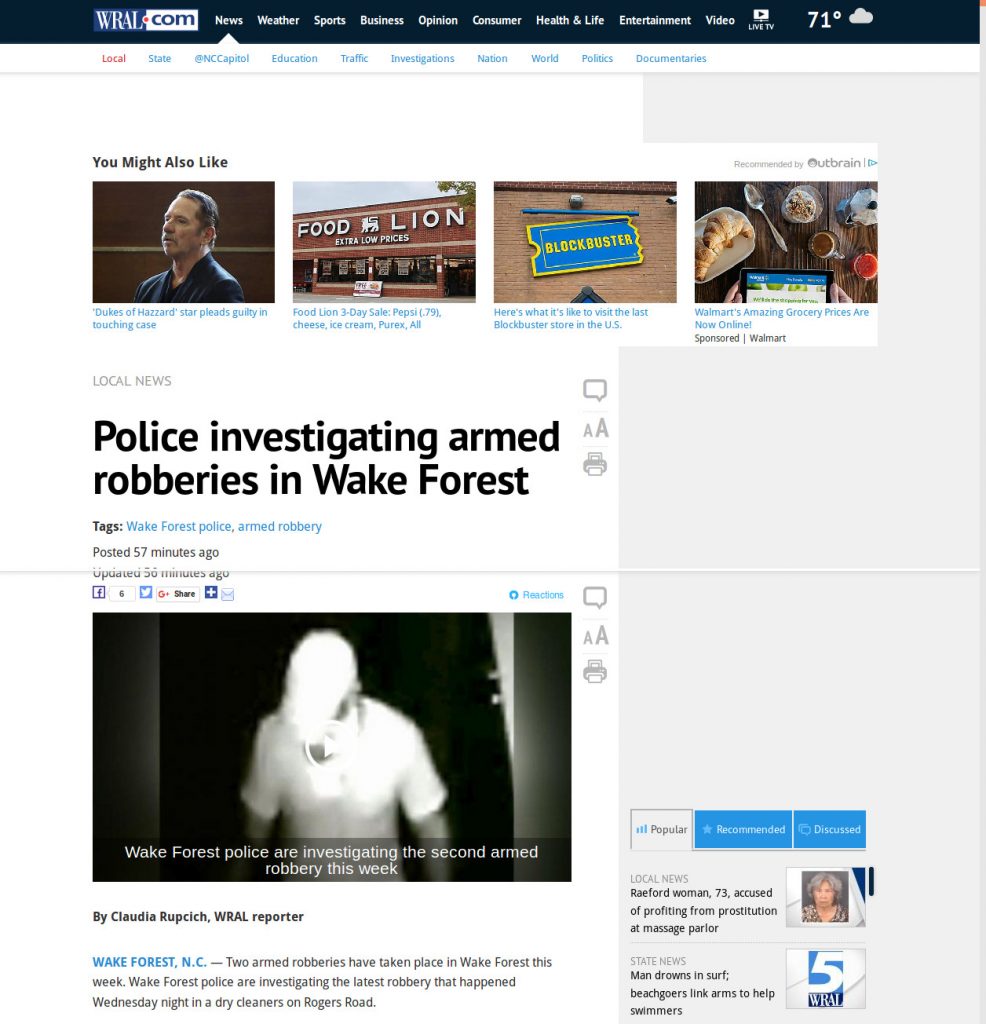
Full of fake news! Click to see the reassembled full page, scaled down for your bandwidth’s pleasure.
Got an email yesterday from Google, saying it was time to renew my Google Adsense account. I took Google ads off my page so long ago that I forgot all about them. Fortunately, my blog is a labor of love and expenses run around $20/month. It’s not exactly a high-volume website like the websites of the local media.
I looked up a story today on the website of WRAL, a local television station. It was a story on a robbery and was a bit short on facts. Looking for more information, I began scrolling the page.
And scrolling … and scrolling … and scrolling.
The page went on and on, but it wasn’t more news stories; it was that dreaded garbage known as “sponsored content.” These are paid advertisements that masquerade as news stories, often using lurid, click-baiting headlines. Intermixed with these tabloid-esque stories were occasional links to WRAL’s content.
I got so outraged at the dreck WRAL was serving up to me that I spent over an hour just capturing screenshots of the page and reassembling these shots into the original page. I had to do this because the page was far too lengthy to fit onto one browser screen, crazy as it might sound. So that’s what you see above.
Once I had reassembled the page I decided to calculate the percentage of real news on the page compared to sponsored content.
Result? Pixel for pixel, there is five times as much sponsored content on the page as legitimate news! It’s overwhelmingly paid advertising!
Now, I don’t have anything against advertising in general. Everybody’s got to pay the bills, after all. Heck, my blog once had ads on it for a while. What I do have a problem with is that these ads are virtually indistinguishable from the real content on the site, something that tiptoes right up to a line the Federal Trade Commission has drawn to protect the public, if not crosses it.
Is this what media sites have to do nowadays to make a living? Has it really come down to racy headlines, tarted up to fool readers into thinking it’s news? At least with television advertising it’s pretty easy to distinguish the station programming from its advertising. On websites it’s pretty much impossible.
I don’t mean to single out WRAL for this. At least they label this content as sponsored. The local newspaper, the News and Observer, uses “suggested for you” content that might technically not be sponsored content but is just as lurid and click-baiting.
I’d like to see a little more balance with content versus ads. Five times as much advertising might work for a newspaper but it is outrageous on a webpage. And should a media site feel the need to load up a page with advertising, at least make it ads from local businesses with legitimate products or services. No more fake news, please!
